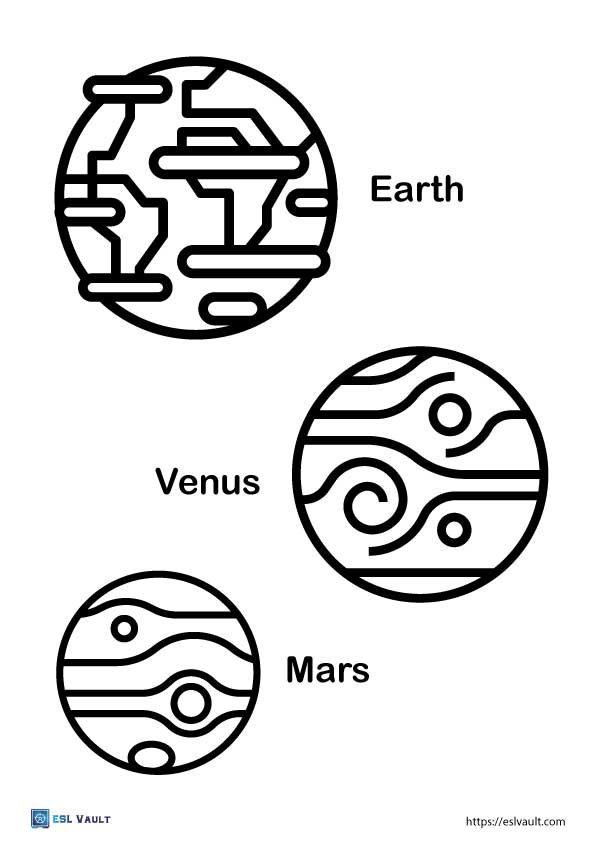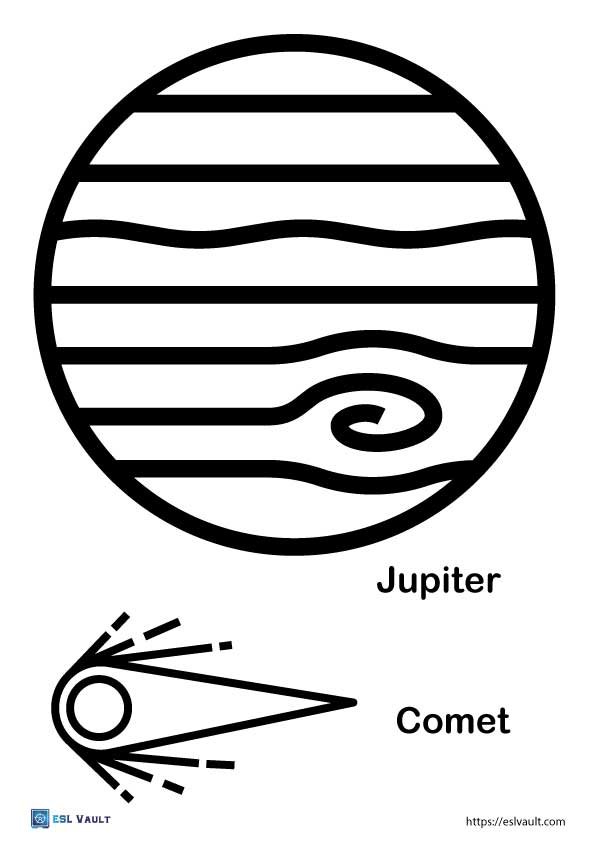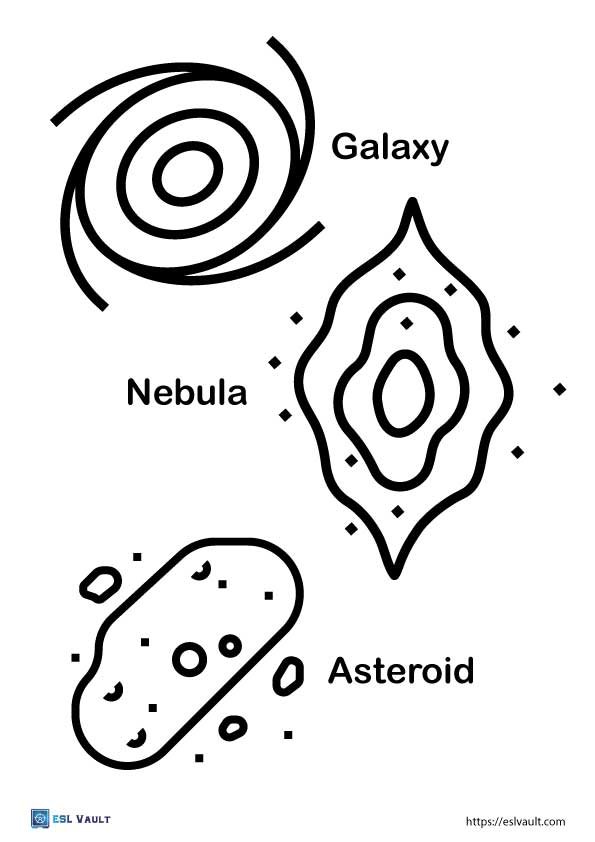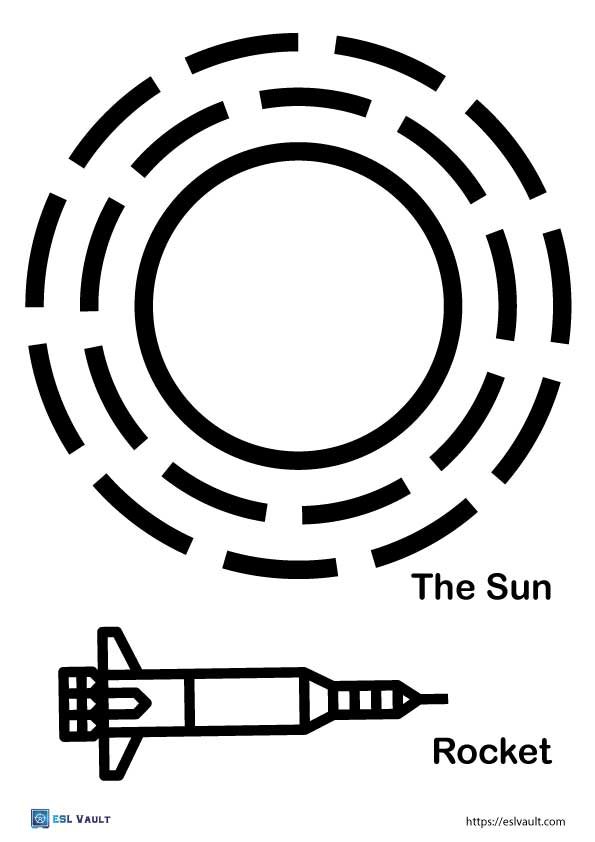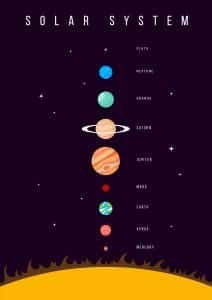Free printable solar system mobile kit
This classic space activity always goes down well in craft and science lessons. It helps students learn the planets and other space-related vocabularies.
There are 7 printables in all but if you don’t use the sun and only want to assemble the planets you can get away with only 4 of the templates. Note that Pluto hasn’t been included but if you are a Pluto sympathizer you can easily make another very small circle yourself!
The planets are not to scale as it just isn’t practical for a hanging mobile. If it was to the exact scale you would end up with a massive sun and a tiny speck to represent Mercury. Having said this it is kind of to scale in that no planet is bigger or smaller in relation to the other planets sizes.
For reference the actual diameters of these objects are –
The Sun – 1391 million kilometers, Mercury – 4879 km, Venus 12 104 km, Earth 12 756 km, Mars 6792 km, Jupiter 142 984 km, Saturn 120 536 km, Uranus 51 118 km, and Neptune 49 528 km.
Some extra objects have been added in case you want to make your mobile a bit different. There are spacecraft, an astronaut, and other space objects. This makes thye set useful if you wanted to do a mobile featuring only one or 2 planets.
Colouring the planets for the Solar System mobile
Once you have printed out the sheets you need, the next step is to colour them in. Note that this craft project can be quite time consuming so it is usually a good idea to get your students to do it in pairs or small groups. You can let your students use whatever colours they like or provide them with instructions such as these –
For Mercury use grey and brown. Venus is a pale yellow. Earth has blue seas, white clouds and green and brown land. Mars is red and brown with white ice caps. Jupiter is mostly orange with shades of red, brown and yellow, it also has white bands. The big spot on Jupiter is red.
Saturn is pale gold, it does have red and blue clouds but we cannot see them. Uranus is a pale blue. Neptune is also pale blue but darker than Uranus, it also has a dark blue spot. If you did make a Pluto, it is dark brown.
How to make a Solar System Mobile
Once the selected pictures have been printed and coloured in, it is time to start the mobile assembly. To do this you will need – scissors, sticky tape, string, and something to hang all the pictures from.
For the hanging stick, you can use pretty much anything. Two easy and cheap ways are to either use drinking straws that you attach together or coat hangers. With both of these items, you can make a simple straight hanging stick or a circular one.
First, cut out your coloured objects. If they’ve been printed on very thin paper you may want to glue or sticky tape them to some card so that they hang better. Once cut out, attach some string to the back of the pictures with some sticky tape. The length of the string depends entirely on you.
Sometimes it looks good to have different objects hanging higher and lower than each other, especially if you have a short stick. You can just tie the other end of the string to your hanging stick or again use sticky tape to attach it.
To be an accurate Solar System mobile you will need to put the planets in the correct order of distance from the Sun. This is Sun – Mercury -Venus – Earth – Mars – Jupiter – Saturn – Uranus – Neptune.
Your students should now have a completed mobile. Hang them up and stand back to admire their work!
Related Space activities
For further space-related exercises, you may want to try a space vocabulary worksheet. For speaking activities and discussion classes, have a look at the space conversation questions.


